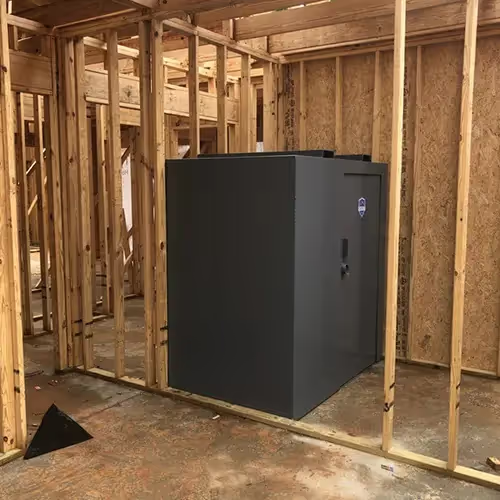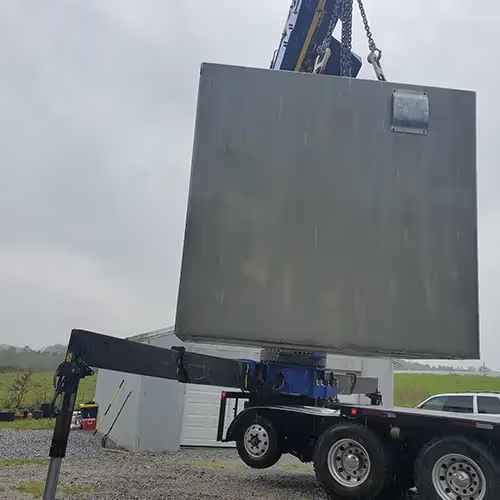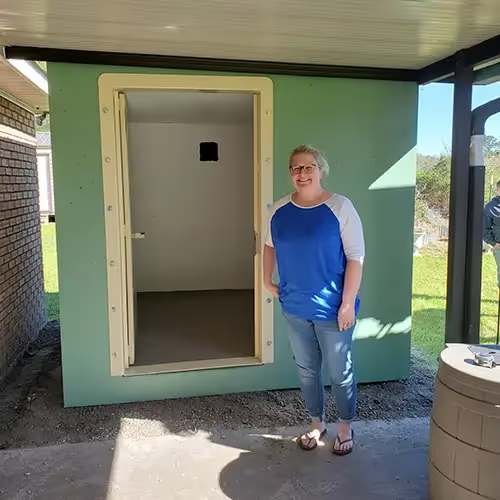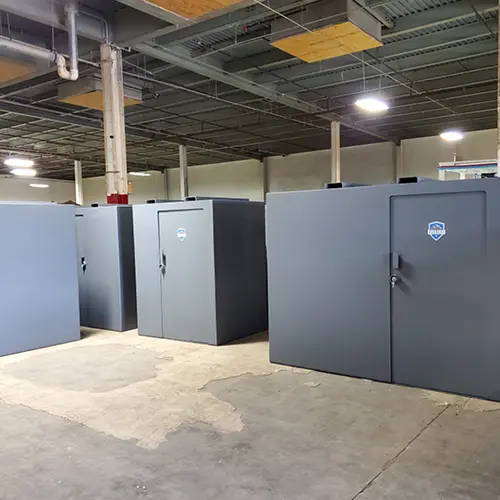DIY Storm Cellar Plans: What to Know Before You Build


Have you ever thought about what you’d do if a powerful storm hit your area? For many families, having a safe place to ride out severe weather is both comforting and practical. A storm cellar can give you that peace of mind, but building one yourself isn’t as simple as digging a hole. Understanding underground shelter design is essential for a safe and durable build.
This post focuses on DIY storm cellar plans and what you need to know before starting. From safety considerations to layout decisions, numerous factors determine whether your shelter will function as intended. Planning upfront can save you significant money, reduce construction errors, and prevent potential hazards later. Weather events are unpredictable, so having a well-designed emergency preparedness shelter ensures your family can stay safe and calm when tornadoes or severe storms strike.
Modern homeowners increasingly explore home tornado shelter plans, DIY safe room blueprint, and emergency storm bunker layout to meet contemporary safety standards. Even with prefabricated options like prefab storm cellar kits, understanding design, materials, and construction techniques is crucial. By investing time in research, understanding local building codes, and considering your household’s unique needs, you can create a storm cellar that offers reliable protection and long-term usability. This guide provides all the necessary information to approach construction with confidence while factoring in both safety and practicality.
The Evolution and Importance of Storm Cellars
Storm cellars have been used for generations, particularly in tornado-prone regions. Early versions were simple backyard storm cellar construction near homes, offering quick escape from extreme winds and flying debris. As building knowledge improved and weather unpredictability increased, these shelters evolved from basic pits into carefully engineered structures, emphasizing reinforced concrete shelter design and quality underground bunker materials.
Storm cellars serve as reinforced spaces built to withstand extreme weather conditions. Sometimes called safe rooms or tornado shelters, these structures provide a secure refuge during life-threatening storms. Modern DIY tornado safe room instructions allow homeowners to construct effective shelters themselves, meeting contemporary safety standards while offering practical advantages over older models. Even homemade tornado safe room designs now incorporate features like secure doors, reliable ventilation, and reinforced walls.
Planning your family storm shelter ideas carefully ensures protection for your household while meeting modern expectations. Prefabricated solutions like prefab storm cellar kits can simplify construction, but understanding design principles, material choices, and spatial planning is essential. Whether building a custom underground shelter or using pre-made components, knowledge of historical evolution and modern design practices ensures the result is both safe and reliable. Storm cellars have always reflected foresight, and today’s DIY options empower homeowners to maintain that legacy with confidence.
Key Considerations Before Building a Storm Cellar
Before starting construction, several crucial factors ensure your storm cellar is safe, functional, and long-lasting. Proper planning saves time, reduces errors, and prevents future problems. Consider these essentials carefully:
- Location – Ground stability, drainage, and accessibility are critical. Following a storm cellar dimensions guide helps optimize layout and safety.
- Size and Capacity – Plan for household members and emergency supplies. Basement tornado shelter plans help integrate shelters with existing structures.
- Materials – Choose durable options like reinforced concrete, steel, or fiberglass. Use a concrete storm shelter guide to select materials wisely.
- Ventilation – Proper airflow is essential. Follow safe room ventilation plans to ensure comfort and safety for long-duration storms.
- Entry and Exit – Install a secure storm cellar entrance with quick access and a secondary exit for safety.
- Waterproofing and Drainage – Implement storm bunker insulation techniques to prevent flooding or leaks in your underground structure.
Neglecting any of these areas can compromise the shelter’s effectiveness. For example, improper drainage may flood a well-constructed DIY underground storm refuge, and insufficient capacity can create dangerous overcrowding. Considering all factors holistically ensures a shelter that meets both functional and safety requirements. Investing time in these considerations before construction sets the foundation for a reliable, long-term solution. Effective DIY underground bunker tips help homeowners combine safety, durability, and cost-effectiveness when planning their storm cellars. The integration of materials, design, and safety features ensures your family is protected while maintaining comfort and usability during emergencies.
The Benefits of Building Your Own Storm Cellar
Creating a DIY storm cellar offers multiple advantages that go beyond immediate safety. When done correctly, it provides peace of mind, customization, and long-term value.
- Custom Layout – Tailor underground storm room planning to your household’s needs, including storage for emergency supplies and multi-purpose areas.
- Cost Savings – Building yourself is often cheaper than affordable storm shelter options, especially when using available materials and tools.
- Peace of Mind – Confidence in construction comes from knowledge of DIY reinforced safe room techniques and homemade tornado safe room designs.
- Added Value – Increases home appeal, particularly with a well-implemented storm shelter cost estimate and design for longevity.
- Emergency Preparedness – Store safe room emergency supplies in a secure, accessible space for peace of mind during storms.
For instance, a family in the Midwest followed DIY underground bunker tips using reinforced concrete to build a shelter with emergency supplies, allowing them to safely manage tornado season. Beyond safety, the project strengthens property value and empowers homeowners with confidence in their ability to protect their family. Tailoring family storm shelter ideas ensures that the structure meets specific needs, including accessibility, comfort, and storage. Whether integrating backyard storm cellar construction or using prefab storm cellar kits, proper planning and construction ensure the DIY project maximizes benefits while maintaining high safety standards. The investment in time, effort, and planning pays dividends in protection and peace of mind.
Challenges of Building a DIY Storm Cellar
Building your own storm cellar comes with challenges that must be addressed to ensure safety and success. Understanding potential hurdles allows homeowners to plan, budget, and avoid problems.
- Upfront Costs – Quality underground bunker materials, reinforced concrete, steel, and specialized doors can be expensive.
- Time and Labor – Building a shelter often requires weeks of consistent effort and significant physical labor.
- Permits and Regulations – Complying with DIY storm shelter permits and home storm bunker regulations is essential to meet local codes.
- Water and Drainage Issues – Improper planning can result in flooding or leaks, even in a well-designed storm bunker insulation technique layout.
- Skill Requirements – Understanding emergency bunker construction steps or consulting professionals may be necessary for complex elements.
Managing these challenges includes researching local codes, budgeting for materials, and consulting experts when needed. Following concrete safe room DIY ideas ensures structural stability, while storm cellar lighting solutions improve usability and safety. Preparing for potential obstacles allows a smoother project and prevents compromises in safety. A patient, step-by-step approach ensures that your DIY underground storm refuge is reliable, durable, and ready to protect your family during severe weather events.
Step-by-Step Guide to Planning Your DIY Storm Cellar
- Assess Your Needs – Determine capacity, emergency supplies, and multi-purpose uses for family emergency shelter layout.
- Choose the Right Location – Evaluate drainage, soil stability, and accessibility, using backyard tornado shelter tips.
- Design Your Layout – Sketch entrances, ventilation, storage, and storm cellar dimensions guide for proper planning.
- Select Materials – Decide on reinforced concrete, steel, or other underground bunker materials. Consider modular storm shelter systems for flexibility.
- Secure Permits – Obtain approvals through DIY storm shelter permits while following home storm bunker regulations.
- Plan Drainage and Waterproofing – Apply storm bunker insulation techniques to avoid flooding.
- Gather Tools and Supplies – Ensure all necessary equipment and DIY underground bunker tips are ready.
- Execute the Build in Phases – Excavation, foundation (storm shelter foundation plans), walls, doors, ventilation, and finishing.
- Inspect and Test – Verify structural integrity, airflow, and water resistance.
Using templates, guides, and proper tools improves accuracy and safety. Following DIY tornado safe room instructions ensures the project is manageable, and integrating storm cellar lighting solutions enhances usability. Incremental progress builds confidence while maintaining safety, ensuring the shelter serves its intended purpose effectively.
Future Trends in Storm Cellars and Home Safety
Storm safety is evolving rapidly, and DIY storm cellars are part of this innovation. Modern designs prioritize safety, comfort, and adaptability to future weather challenges.
- Smart Technology Integration – Sensors, weather alerts, and ventilation monitoring increase shelter responsiveness.
- Sustainable Materials – Eco-friendly, durable options align with concrete storm shelter guide principles.
- Modular Designs – Prefab storm cellar kits allow relocation, expansion, or multi-purpose functionality.
- Community Preparedness – Shared emergency preparedness shelter networks improve neighborhood safety.
- Regulatory Updates – Earthquake-resistant storm shelter codes may evolve alongside severe weather trends.
These developments ensure DIY reinforced safe room designs remain relevant, safe, and adaptable. Awareness of trends helps homeowners anticipate future needs and create long-lasting shelters that protect families effectively.
Wrapping Up Your DIY Storm Cellar Journey
Building a storm cellar is achievable with the right knowledge and attention to detail. Proper planning of storm cellar dimensions guide, DIY underground bunker tips, and underground shelter safety features ensures safety and functionality.
Key Takeaways:
- Preparation matters – Consider underground shelter design, location, materials, and ventilation.
- Balance benefits and challenges – Manage cost, permits, and construction complexities.
- Action leads to security – Follow a clear plan and explore portable tornado shelter solutions if needed.
Evaluate property, draft sketches, and research DIY storm shelter permits or backyard bunker cost guide. Every step brings you closer to a safe, reliable home addition that serves your family for years.
Final Thoughts on DIY Storm Cellars
Constructing a homemade tornado safe room demonstrates foresight and care. By implementing reinforced concrete shelter design, storm shelter foundation plans, and quality underground bunker materials, your DIY storm cellar becomes a long-term investment in family safety. Proactive planning, careful execution, and modern design considerations ensure your shelter offers maximum protection and peace of mind.




